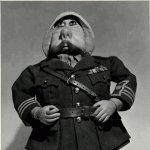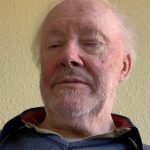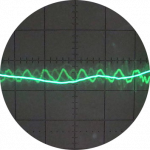Hitachi Yutaki M efficient operation
So i think i have narrowed it down without however knowing the solution. Buffer creates a loop. Hp provides the required water temp to the buffer but somehow the energy is not diverted to the ufh but returns to the hp, hence the low dt and the reduced temp at the manifolds compared to the outlet reading of the hp. Does this means that there is unbalanced flow between the primary circuit (hp and buffer) and secondary circuit (buffer and manifolds)? The circulating pump in the first circuit is adjustable but the second is not
Posted by: @iraknicDoes this means that there is unbalanced flow between the primary circuit (hp and buffer) and secondary circuit (buffer and manifolds)? The circulating pump in the first circuit is adjustable but the second is not
Yes, almost certainly.
I dont know if the HP can control the buffer, some can. If the buffer has two temperature sensors at different heights then its possible in principle to use this information modulate the speed of one or other pump so that on average the rates are the same (which is ideally what you want). It would be worth looking at the HP manual and the buffer in case it can do this.
Otherwise you are down to adjusting the pump rates. The HP might adjust the primary pump to suit its needs. If it does so and unless the HP does feature buffer management, Id be loathe to touch this. That said there is generally no harm in turning the primary up, HPs complain about low flow (because its not enough to take the heat away) more than about high flow.
Im surprised that there is no adjustment on the secondary pump, many have three settings.
Having the primary a bit faster than the secondary will tend to force the thermocline (barrier between 'hot' and cold' water, assuming its stratified) down the tank, which means that the feed to the emitters should be at the same temperature as the feed from the heat pump, thus minimising the sacrifice in efficiency which would occur if the feet to emitters is lower temp than the feed from the heat pump. Obviously this will cause a little bit of recycling through the heat pump, but its better so far as I understand these matters than pushing the thermocline to the top which is what happens if the primary is slower than the secondary.
Do you know why the buffer is fitted? Generally they are a bad idea in heat pump systems, albeit that many installers put them in because its pretty much guaranteed to reduce callouts (by masking problems).
4kW peak of solar PV since 2011; EV and a 1930s house which has been partially renovated to improve its efficiency. 7kW Vaillant heat pump.
@iraknic how are you monitoring your UFH delta T?
Get a copy of The Ultimate Guide to Heat Pumps
Subscribe and follow our YouTube channel!
@jamespa the buffer was fitted to increase water in the system due to the existence of zones. @editor
I am measuring the temps at the manifold using an IR thermometer. In my case it seems that the primary water pump is slower than the secondary (after the buffer) one? Can the secondary flow be reduced by manually decreasing ufh flow at the manifolds?
Posted by: @iraknicCan the secondary flow be reduced by manually decreasing ufh flow at the manifolds?
Yes. Its the same as turning down the lockshield on a radiator
4kW peak of solar PV since 2011; EV and a 1930s house which has been partially renovated to improve its efficiency. 7kW Vaillant heat pump.
i attach the setup of the buffer, highlighting the return lines and the specs of the water pump that is placed after the buffer. I thought of closing a bit of the outlet and return valves of the left side of the buffer (to and from) the manifolds and increase the flow of the primary pump (from hp to the buffer) to see what happens
@iraknic Please note, I don’t have any experience at all (diddly squat) of UFH plumbing but if a circuit has both send and return valves, it is probably only necessary and better to just constrict the flow to the circuit and leave the return without any restriction. I may be talking through the wrong orifice of course! Regards, Toodles.
Toodles, heats his home with cold draughts and cooks food with magnets.
Posted by: @iraknicA reason i believe is causing a low delta-t is the waterflow that is too high
I also tried lowering the internal waterpump speed but have not found yet how to do that. The setting in the installer section of the controller did have a deltaT setting and a HP ON deltaT setting I changed both to the same increase but the waterpump speed still is 100%
How did you try changing the deltaT?
I have a modbus gateway from which I can extract most relevant information. No real cycle information to be found though. Once can monitor and deduce it sure.
- 26 Forums
- 2,342 Topics
- 53 K Posts
- 272 Online
- 6,000 Members
Join Us!
Worth Watching
Latest Posts
-
RE: Setback savings - fact or fiction?
I apologise that I have been silent on this for a while...
By JamesPa , 1 hour ago
-
RE: Poll for Time of Use, tariffs, technology
We made this work (2 day protection can be reassuring)....
By Batpred , 2 hours ago
-
And arguably even more important, sodium will be hopefu...
By Batpred , 3 hours ago
-
RE: LiFePO4 lithium battery fires and explosions
All players would normally be expected to be transparen...
By Batpred , 3 hours ago
-

RE: Free Ecoheat Heat Pump Install
@deltona Rings just about every alarm bell going. Wal...
By bontwoody , 5 hours ago
-

RE: MELcloud scheduling misbehaviour
@davidalgarve I didn't stay on AA for long because it s...
By downfield , 13 hours ago
-
RE: A Smarter Smart Controller from Homely?
I've been thinking of emailing Homely to ask for a few ...
By JohnnyB , 15 hours ago
-
Max output of Heat pump (Daikin 4Kw EDLA04)
Hello, I am a bit puzzled that according to pcdb tes...
By GeorgeA , 15 hours ago
-

In that case, @technogeek, I’d sign up for the free sol...
By Majordennisbloodnok , 16 hours ago
-

RE: Has Anyone Else Noticed a Decline in Tradesmanship?
@cathoderay Hence my rider about ‘all else being equal’...
By Toodles , 17 hours ago
-

RE: Heat Pump Performance Analysis Web App using Modbus Data
@redzer_irl — all my heat pump data is in csv files, me...
By cathodeRay , 17 hours ago
-

That’s not a problem. If you can hit the main landing p...
By Majordennisbloodnok , 17 hours ago
-

RE: Configuration issues with 10kW Midea R32 heat pump
@benson I believe there are quite a few of these instal...
By Toodles , 17 hours ago
-
RE: 10kw heat pump run in 24*7 data?
I would say you most likely do need 10kW. My gas consu...
By JamesPa , 18 hours ago
-
RE: Mitsubishi Ecodan 11kw Defrosting Issue.
@thundermink I managed to find the fault. I did it a lo...
By meehow , 18 hours ago
-
RE: Here is my heat pump installation with questionable COP in Italy
Well in Italy there is nothing controlling the quality ...
By materox345 , 20 hours ago
-

RE: What a Bad Heat Pump Installation Looks Like
@editor The trick to an inside unit installation is to ...
By MikeFl , 1 day ago
-
RE: Different dT on each radiator?
The way heating systems are designed will result in rou...
By JamesPa , 2 days ago
-

RE: Homely for Daikin Altherma 3 - Petersfield Area
@russ If you would care to pose your questions on one o...
By Toodles , 2 days ago







